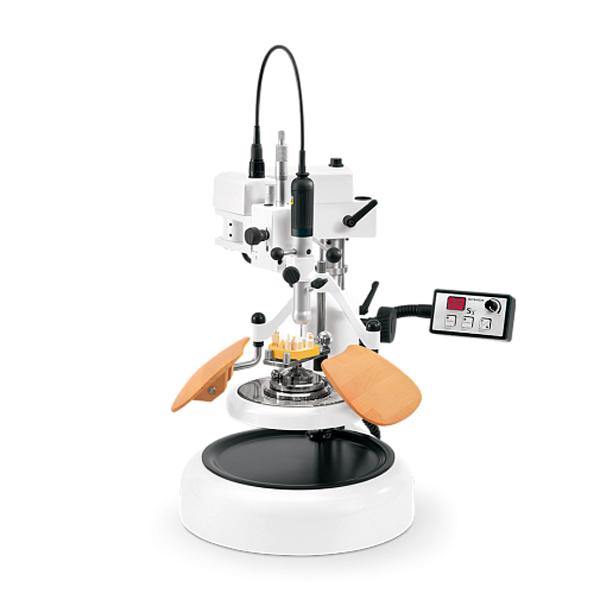
-
Implant-supported prosthetics
: Implant-supported prostheticsFixing dental restorations on titanium roots for stability and durability of prostheses.

Hybrid dentures

Hybrid prosthetics belong to the category of removable dentures. Its feature is that the removable part of the prosthesis rests not only on the gums but also on implants. There are several ways to achieve hybrid functionality. The prosthesis can snap onto a special abutment, be placed on a support bar, or use telescopic crowns. To make it easier for patients to remove the prosthesis, discreet nail hooks are sometimes attached to the hybrid prosthesis.
The procedure for creating a hybrid prosthesis begins with implantation. Essential steps include installing transfers, taking an impression, and creating a plaster model with laboratory analogs of the implants. You can learn more about the implantation technology from a laboratory perspective on the relevant department’s page.
Fixing dental restorations on titanium roots for stability and durability of prostheses.


Types of work
Kč
70212
Total removable denture
upper other – hybrid
6000
70212P
Total removable denture upper
other – hybrid, PEEK
11000
70232
Total removable denture lower
other – hybrid
6000
70232P
Total removable denture lower
other – hybrid, PEEK
11000
For snap-on hybrid prostheses, a “Ball” or “Locator” abutment is installed on the implant. The counterpart of the abutment is attached to the reinforcement of the hybrid prosthesis, which in its nature and manufacturing technology does not differ from conventional removable dentures. When the prosthesis is put on, a characteristic click occurs due to pressing. The “Locator” abutment ensures a tighter fixation and requires more force to remove than the “Ball.”
Fabrication of removable dental structures for restoring the function and aesthetics of missing teeth.

An intermediate option between hybrid prostheses and fixed prosthetics on implants is prostheses that are screw-retained on a Multi-unit abutment but are manufactured using the technology of complete removable dentures (prefabricated teeth, injection molding, reinforcement).



One popular type of hybrid prosthesis is one that is placed on a support bar on implants. The support bar is usually cast or manufactured using CAD/CAM technology and is used when the number of implants is insufficient to support other types of prostheses. The bar is fixed to the implants using a Multi-unit abutment.
120803
Bar support point
$170
121206
ALL-ON-6
(6 crowns + 8 intermediate parts, on a milled titanium bar)
$3000
121207
ALL-ON-6
(6 crowns + 8 intermediate parts, on a cast cobalt-chrome bar)
$2600
121206L
ALL-ON-4, zirconia crowns, cast CrCo bar
58000
121207L
ALL-ON-6, zirconia crowns, cast CrCo bar
62000
The counterpart of the bar is attached to the reinforcement of the prosthesis, which can be metal or metal-plastic. It is crucial to maintain strict parallelism for the walls of the bar. The support bar evenly distributes the pressure of the prosthesis between the gum and individual implants.




The bar and its counterpart are not made to exact matching dimensions. This is primarily to allow the patient to easily remove the prosthesis. To ensure a tight fit of the prosthesis on the bar, special plastic inserts are used, which have a limited lifespan and need to be replaced regularly.
An alternative method for securing a hybrid prosthesis to implants is using telescopic crowns. These consist of two paired parts. The main part is attached to the implant. Its side walls are strictly parallel, giving it a “cap” shape. The counterpart has equally parallel internal walls and fits tightly onto the main part due to exact dimensional matching. The SCHICK S3 Master parallelometer is used to ensure parallelism.
120804
Pre-fabricated bar
$155


Technicians working in this department







